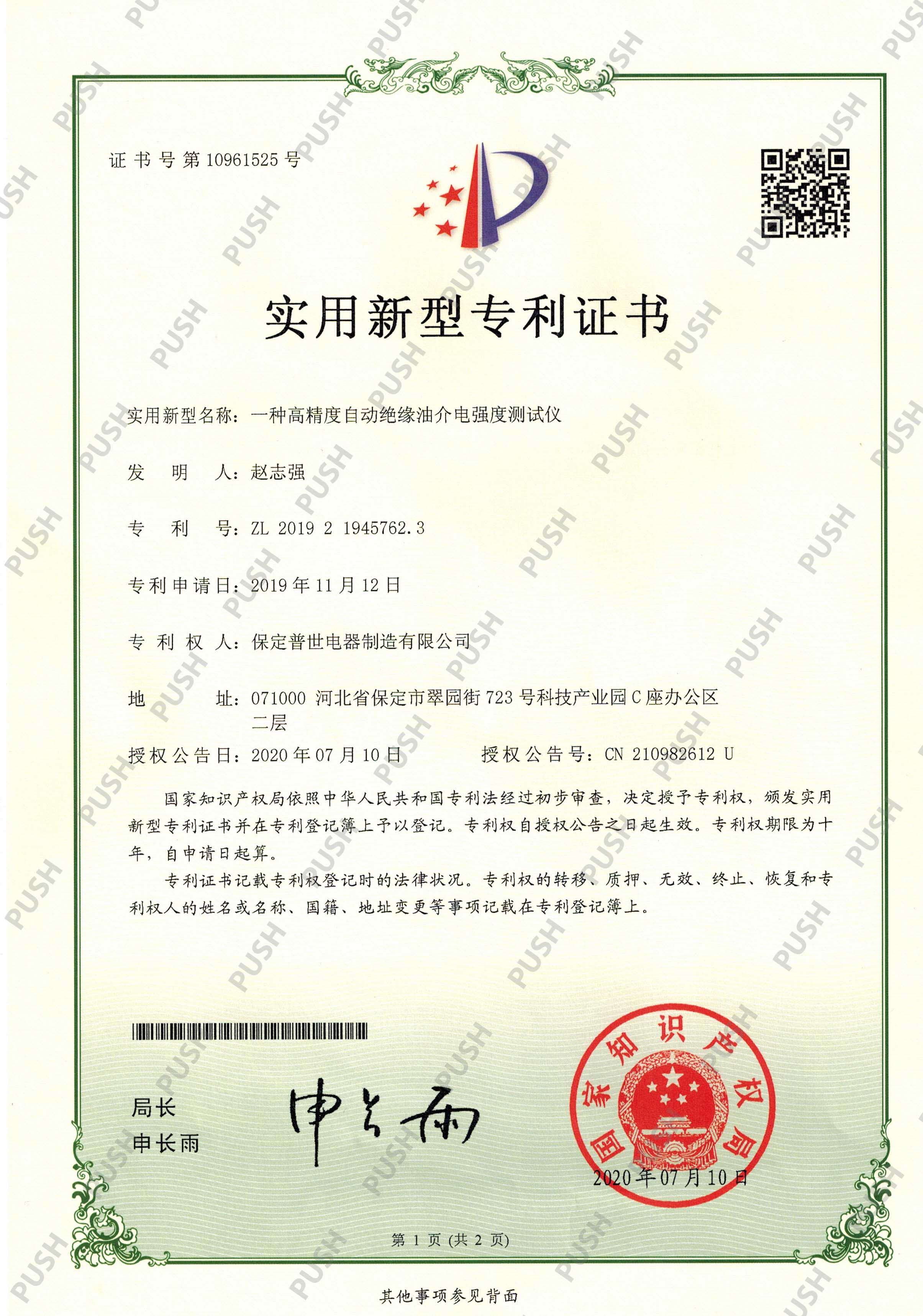 English
English


Testing Insulation Resistance in High Voltage Electrical Equipment for Safety and Performance
High Voltage Insulation Resistance Testing Ensuring Safety and Reliability
High voltage insulation resistance testing is a crucial procedure used to assess the integrity of electrical insulation in various applications, ranging from high voltage power equipment to cables and transformers. This testing plays a vital role in ensuring the safety, reliability, and efficiency of electrical systems that operate under high voltage conditions.
The primary objective of high voltage insulation resistance testing is to measure the insulation resistance of electrical equipment. Insulation resistance refers to the ability of an insulating material to resist electrical current. A high insulation resistance value indicates that the insulation is functioning effectively, thereby preventing leakage currents that can lead to potential hazards, such as electrical shocks, equipment damage, or fire.
During the test, a specialized high voltage insulation tester is employed to apply a voltage—often in the range of 1 kV to 5 kV or higher—to the insulation material. The tester then measures the resistance, typically expressed in megaohms (MΩ). The results are analyzed against established standards and benchmarks to determine if the insulation is within acceptable limits. A value lower than the specified threshold signals that the insulation may be compromised and requires further investigation.
high voltage insulation resistance test

One of the significant benefits of routine high voltage insulation resistance testing is the early identification of potential insulation failures. Regular testing can uncover issues such as moisture ingress, physical damage, and material degradation due to environmental factors or electrical stress. Addressing these issues proactively can help extend the lifespan of equipment, reduce the likelihood of unexpected failures, and ultimately save organizations substantial repair and replacement costs.
Moreover, high voltage insulation resistance testing is often mandated by industry standards and regulations. Organizations are required to comply with guidelines set by entities such as the Institute of Electrical and Electronics Engineers (IEEE) and the International Electrotechnical Commission (IEC). By adhering to these standards, companies not only enhance safety but also demonstrate their commitment to maintaining high operational standards.
It is essential to conduct this type of testing under controlled conditions by skilled personnel. Safety protocols must be strictly followed to mitigate risks associated with high voltage systems. Users must be well-trained and equipped with proper personal protective equipment (PPE) to perform testing safely.
In conclusion, high voltage insulation resistance testing is an indispensable practice in the electrical field. By ensuring the reliability and safety of insulation materials, this testing helps to prevent accidents and prolong the service life of electrical equipment. As technology continues to evolve, so too will the methods of insulation testing, enhancing the efficiency and safety of electrical systems globally.
-
Differences between open cup flash point tester and closed cup flash point testerNewsOct.31,2024
-
The Reliable Load Tap ChangerNewsOct.23,2024
-
The Essential Guide to Hipot TestersNewsOct.23,2024
-
The Digital Insulation TesterNewsOct.23,2024
-
The Best Earth Loop Impedance Tester for SaleNewsOct.23,2024
-
Tan Delta Tester--The Essential Tool for Electrical Insulation TestingNewsOct.23,2024





